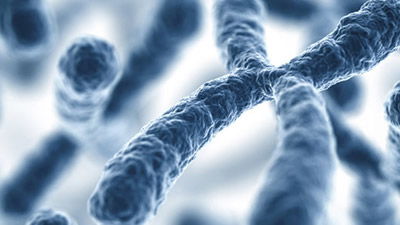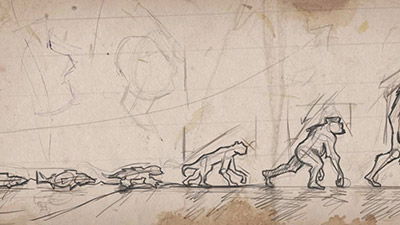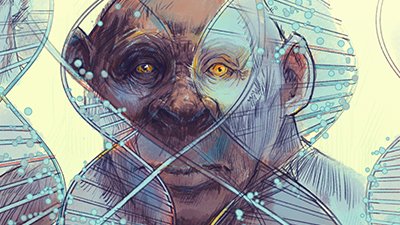
Evidence For Continuing Human Evolution Arguably Irrelevant
Big deal over small, arguably irrelevant changes
News Source
- Yahoo News: “Humans Are Still Evolving, Study Says”
Among the 30 families who settled on the isolated French Canadian island Ile aux Coudres, church records reveal that, from 1799 to 1940, mothers gradually began having children at younger ages. The average age of initial childbearing dropped from 26 to 22. Geneticist Emmanuel Milot contends that this younger onset of fertility represents human evolution by natural selection.
“It is often claimed that modern humans have stopped evolving because cultural and technological advancements have annihilated natural selection,” wrote Milot’s team in their paper, “Evidence for evolution in response to natural selection in a contemporary human population.”1 “Our study supports the idea that humans are still evolving. It also demonstrates that microevolution is detectable over just a few generations.”2
We think, traditionally, that the changes in human population are mainly cultural, which is why a non-genetic hypothesis is given priority over a genetic or evolutionary hypothesis.
“We think, traditionally, that the changes in human population are mainly cultural, which is why a non-genetic hypothesis is given priority over a genetic or evolutionary hypothesis, whether or not there is data to support that,” Milot explained. “We have data that we analyzed from the genetic and nongenetic point of view, and we find that the genetic factors are stronger.” The team attributes 30–50 percent of the change to inherited genetic differences and 50–70 percent to cultural factors. But Milot contends, “Culture shapes the selection pressures. . . . The cultural context was favoring the selection of some genes.”3
The study did not identify any actual genes involved in this change. Milot’s team suggested that possible inherited factors could include fertility, age at puberty, or personality traits. But they add that cultural factors like economic prosperity could act as the “selection pressure” favoring earlier childbearing and consequently larger families.
To assess the significance of these results, we need to consider the validity of Milot’s conclusions as well as his study’s implications. First of all, Milot’s contention that natural selection produced 30-50% of the difference seems to ignore other more likely factors. When phenotypic changes occur within small populations, genetic drift or founder effect is often the cause.
Genetic drift is the result of the simple probability that in each generation some individuals by chance leave behind more descendants than others. Those individuals’ genes, therefore, are more highly represented in the later populations without any regard to fitness for survival. Founder effect is the result of a genetic bottleneck, such as occurs when a small portion of a population is segregated and then reproduces with decreased genetic variability. Both genetic drift and founder effect are magnified in small populations. Milot seemed to acknowledge the possibility of the founder effect and proposed that natural selection was superimposed on it. He said that in “a newly founded population” perhaps “it was not disadvantageous to have big families” owing to improved economic resources.
Of greater significance than whether or not natural selection, genetic drift, or founder effect influenced the fertility of this isolated group is the assertion that “humans are still evolving.” Common sense creationists have never disputed the role of these factors in altering the characteristics of a population of any kind of creature. The key distinction is whether or not Milot’s discovery suggests that human evolution has ever occurred, much less is “still” occurring.
As Milot says, his study concerns “microevolution.” Microevolution refers only to changes within a created kind.
As Milot says, his study concerns “microevolution.” Microevolution refers only to changes within a created kind. Again, creationists have never disputed the occurrence of these sorts of changes. Evolutionists contend, however, that given enough time microevolution will lead to macroevolution of new kinds of organisms. Proverbially, they say that “macroevolution is just microevolution writ large, or that the process we see and study as the cause of microevolution will, given sufficient time, also cause everything we attribute to macroevolution.”4 However, so-called macroevolution would require the acquisition of new genetic information. Microevolution only involves the loss or reshuffling of existing genetic information within a created kind. Therefore, the two are changes of wholly different types and are not logically connected. (We prefer avoiding either term to avoid confusion.)
So, are “humans still evolving”? Well, have genetic characteristics of this population changed over time? Possibly. Have the changes observed here been influenced by natural selection? Perhaps. But does this study offer any evidence that humans are gradually evolving into some sort of higher life form or by implication evolved from some lower life form? Absolutely not.
As we learn in the Bible, God created all kinds of organisms during Creation week and designed them to reproduce after their kinds. They only vary within their created kinds. On the sixth day, God created Adam and Eve, and He likewise provided them with the capacity to produce humans with many genetic variations. These variations have naturally interacted with culture and with selection pressures over time. But the first man and woman were not lower forms of life. Furthermore, any future destiny of human beings will not involve evolution into higher life forms but only the changes that God in His grace will perform at “the times of restoration of all things” (Acts 3:21). The Bible tells us the truth about the origins of humanity and what we can expect in the future.
Further Reading
- Get Answers: Human Evolution
For More Information: Get Answers
Remember, if you see a news story that might merit some attention, let us know about it! (Note: if the story originates from the Associated Press, FOX News, MSNBC, the New York Times, or another major national media outlet, we will most likely have already heard about it.) And thanks to all of our readers who have submitted great news tips to us. If you didn’t catch all the latest News to Know, why not take a look to see what you’ve missed?
(Please note that links will take you directly to the source. Answers in Genesis is not responsible for content on the websites to which we refer. For more information, please see our Privacy Policy.)
Footnotes
- Emmanuel Milot et al., “Evidence for Evolution in Response to Natural Selection in a Contemporary Human Population,” PNAS 108, no. 41: 17040–17045, doi:10.1073/pnas.1104210108/.
- Brandon Keim, “Recent Human Evolution Detected in Quebec Town History,” Science, October 3, 2011, http://www.wired.com/2011/10/recent-human-evolution.
- Ibid.
- J. Travis and D. N. Reznick, “Adaptation” in Evolution the first four billion years (eds. M. Ruse and J. Travis, Cambridge, Massachusetts: The Belknap Press of Harvard University Press, 2009), 126.

Answers in Genesis is an apologetics ministry, dedicated to helping Christians defend their faith and proclaim the good news of Jesus Christ.
- Customer Service 800.778.3390
- Available Monday–Friday | 9 AM–5 PM ET
- © 2026 Answers in Genesis



